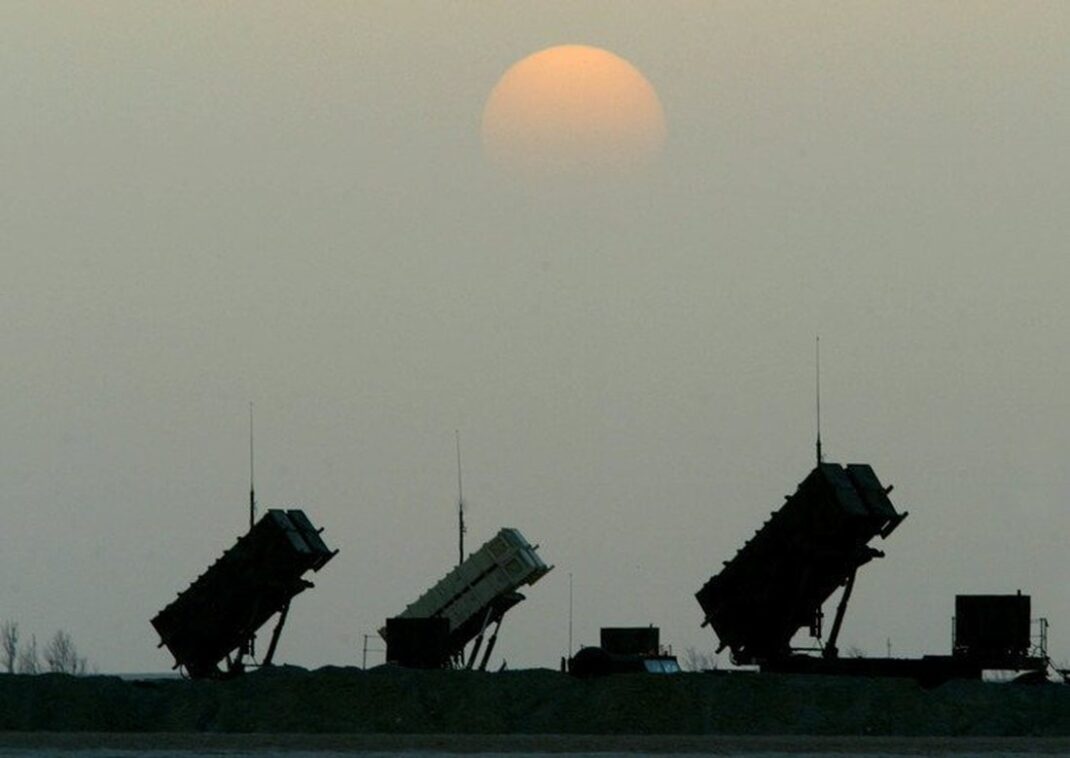By Jodi Vittori

Despite increasing scrutiny, U.S. arms exports to the Middle East and North Africa could be headed toward an increase. American arms exports to the Middle East and North Africa are once again front and center in American politics.
And while the attention could result in a slowdown or halt of arms exports to the region due to increased scrutiny, it is just as likely that at least some countries in the region could experience an increase in U.S. arms imports despite the economic and medical calamities brought on by Covid-19 pandemic and low oil prices.
Recently, the New York Times published an exposé that contained additional information about prior allegations of inordinate influence by the U.S. defense industry over the Trump administration that has helped enable the continued sale of arms to Saudi Arabia and the United Arab Emirates (UAE).
This is despite U.S. foreign policy concerns associated with human rights abuses—especially the possible deliberate targeting of civilians in the war in Yemen and the Saudi government’s killing of journalist Jamal Khashoggi.
Only days later, on May 18, allegations emerged that the State Department inspector general, Steve Linick, had been fired in part to halt a nearly completed inspection that examined approval of these arms exports.
These most recent controversies derive from a rarely used loophole in American export legislation.
On May 24, 2019, Secretary of State Mike Pompeo made an emergency declaration of “Iranian malign activity” that posed a “fundamental threat to the stability of the Middle East and to American security at home and abroad.”
(The last time this emergency declaration had been used was in August 1990, when the George H. W. Bush administration approved an emergency sale of tanks and other weapons to Saudi Arabia in the wake of Iraq’s invasion of Kuwait.)
This allowed the Trump administration to go ahead with the approval of $8.1 billion worth of arms for Saudi Arabia, the UAE, and Jordan without providing the required 30-day congressional notification and despite blocks on those approvals by members of Congress.
This also took place despite the fact that previous arms exports—especially to the UAE—had been diverted to groups associated with Al-Qa‘eda, in addition to actions in Yemen considered by many observers to be war crimes.
At a minimum, arms exports to these governments should have required very significant oversight and control—if not outright bans—according to U.S. legislation.
In a series of 22 bills, Congress attempted to overturn these arms exports through procedures established under the Arms Control Export Act.
While the bills to end the contracts passed both the House and Senate in a bipartisan manner, the Senate did not have the two-thirds majority needed to override President Donald Trump’s veto, and thus the arms contracts went through.
All of this has shined an unflattering light on the various pathways of influence and regulatory loopholes in the U.S. arms export system.
It has also laid bare another arms export reality: U.S. arms exports are likely to increase in response to Covid-19, provided there are willing buyers; and the most likely buyers are countries in the Middle East.
With all the unflattering attention on American arms exports to the region, one might expect that they would decrease in the coming years, especially when the focus should be on fighting Covid-19 and its economic consequences.
On the contrary, at least some countries may increase the imports of American arms, despite the economic, conflict-related, and medical misfortunes that are already ongoing in the region. The reasons boil down to a quote from former senator Thomas “Tip” O’Neill, who once quipped that all politics is local.
The history of U.S. arms exports through both Democratic and Republican administrations has shown a clear pattern: Such exports have been allowed to increase when domestic U.S. defense procurement is expected to decline.
With many on the right calling for a hold in U.S. defense and other budgets due to fiscal deficit concerns, and many on the left arguing for defense cuts to pay for medical and economic assistance, there will be a great deal of pressure to cut back on the defense budget, which is already over half of the federal discretionary budget.
This will almost certainly mean cuts to costly procurement programs. In the past, the executive and legislative branches have enabled additional defense exports to help bolster the U.S. arms industry and minimize job cuts, especially if those cuts would come in key congressional districts.
Though there had been some U.S. arms export restrictions as early as 1917, and especially during the Cold War, the modern system of export control laws and regulations took off in the 1970s.
This was the result of revelations of secret arms sales during the war in Vietnam and corrupt arms deals revealed as part of the post-Watergate congressional hearings.
Administrations steer the implementation of such laws through a conventional arms transfer (CAT) policy.
The CAT policy under the Carter administration was very restrained, but under the Reagan administration helping U.S. defense production capabilities and efficiency became a specific stated goal of U.S. arms exports.
Then in the early 1990s, with the end of the Cold War, the U.S. defense export sector found its market for arms shrinking both at home and abroad.
In response, starting under President George H. W. Bush and formally codified by President Bill Clinton, export controls became more limited in scope and were streamlined.
The George W. Bush administration largely kept the Clinton-era policies, as did the Obama administration, albeit with expanded human rights criteria.
The level of arms sales also escalated dramatically under former president Barack Obama, a trend ramped up further during the current administration.
The Trump administration’s policy did not eliminate human rights considerations, but it did remove some of the emphasis on the need for restraint in U.S. arms sales, along with a much stronger emphasis on the economic benefits of arms exports.
A key justification for defense exports has been that they provide jobs to American workers and boost the American economy, especially in key congressional districts.
For example, the sale of F-16s to Bahrain reinvigorated the Lockheed Martin plant in South Carolina; the sale of General Dynamics tanks to Saudi Arabia helped a plant in Ohio; and selling the Raytheon Patriot Missile system to the UAE did the same for a plant in Massachusetts.
As then-House Defense Appropriations Subcommittee chairwoman Kay Granger put it regarding a Trump administration decision to delay military aid to Egypt, “[T]he companies and the workers that put that equipment together in the United States are hurt.”
Like businesses in other industrial sectors, U.S. arms manufacturers are facing plant closures and supply chain issues due to Covid-19.
Many companies, however, have received stimulus money from the CARES Act and the Defense Department is speeding up payments to the sector. Indeed, a few of the biggest manufacturers are even hiring.
A combination of significant lobbying by the defense industry, the revolving door of jobs between the defense bureaucracy, Congress, and industry, and significant contributions to political action committees and dark money linked to the defense industry (since defense companies cannot legally directly contribute to congressional or presidential campaigns) all suggest one thing:
There is a strong chance the defense industry will push for exports to other countries to make up for a likely drop in U.S. arms procurement.
Where are these weapons going? If the past is an indication, most of them will end up in the Middle East.
Since 2010, exports of major arms by the United States have continued to grow, and now make up 36 percent of the worldwide arms market.
Half of U.S. arms exports in the last five years have been to Middle Eastern countries, with half of those going to Saudi Arabia. Between 2015 and 2019, Saudi Arabia’s arms imports rose 130 percent compared to the previous five years, and 73 percent of its arms came from the United States.
Despite low oil prices, budgetary issues, huge economic inequalities, and popular protests, most Middle Eastern and North African governments can continue to import substantial quantities of weapons.
A majority of countries in the region can largely ignore popular opinion or hide many of the arms purchases in opaque defense budgets.
The reason is that nearly all Middle Eastern and North African countries lack any effective security-sector transparency or parliamentary or civil society oversight.
With additional popular unrest likely, some governments will seek weapons in order to help cow their populations. Moreover, arms imports are about more than the recipient countries’ national security needs—indeed, national security is often a low-priority consideration for arms imports.
Arms imports are an opportunity to provide patronage, especially through side contracts known as offsets, to key supporters.
Where security sectors are major employers, they can enable regimes to provide employment for some groups—especially from key ethnic, tribal, or religious groups—while excluding others.
And with the defense sector historically one of the most corrupt economic sectors, there are many opportunities for payoffs.
Especially in an election year, Trump and members of Congress do not want to face voters with defense plant closures, especially when exporting those arms can help keep them open.
Likewise, many Middle Eastern and North African governments may find arms imports a good way to bolster their regimes, even if the money and resources could be better spent elsewhere, especially during a pandemic.
Any additional American weapons in a region that is already filled with conflict, repression, and civil unrest would almost certainly compound the tragic effects of Covid-19.
***
Jodi Vittori is an expert on the linkages of corruption, conflict, illicit financial flows, and national security. She is a defense industry research and policy manager for Transparency International’s Defense and Security program and a fellow at the Carnegie Endowment for International Peace.
___________





